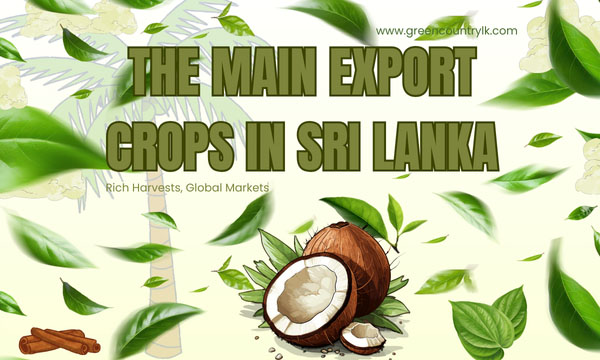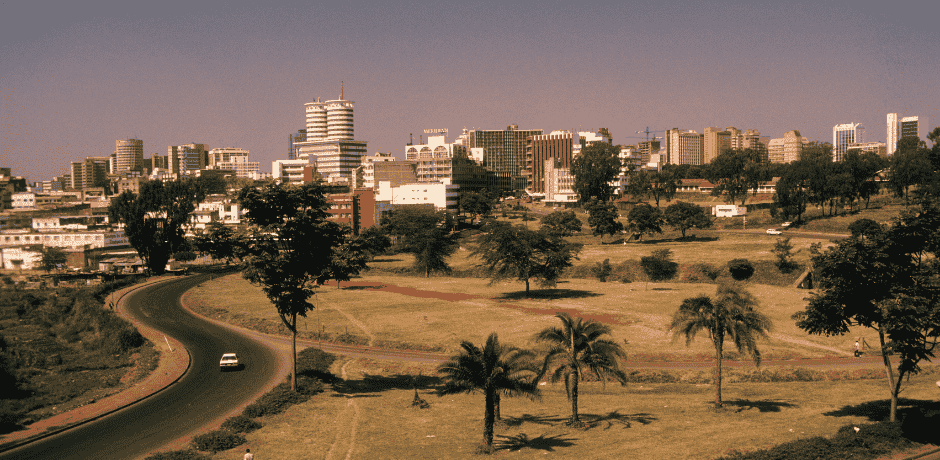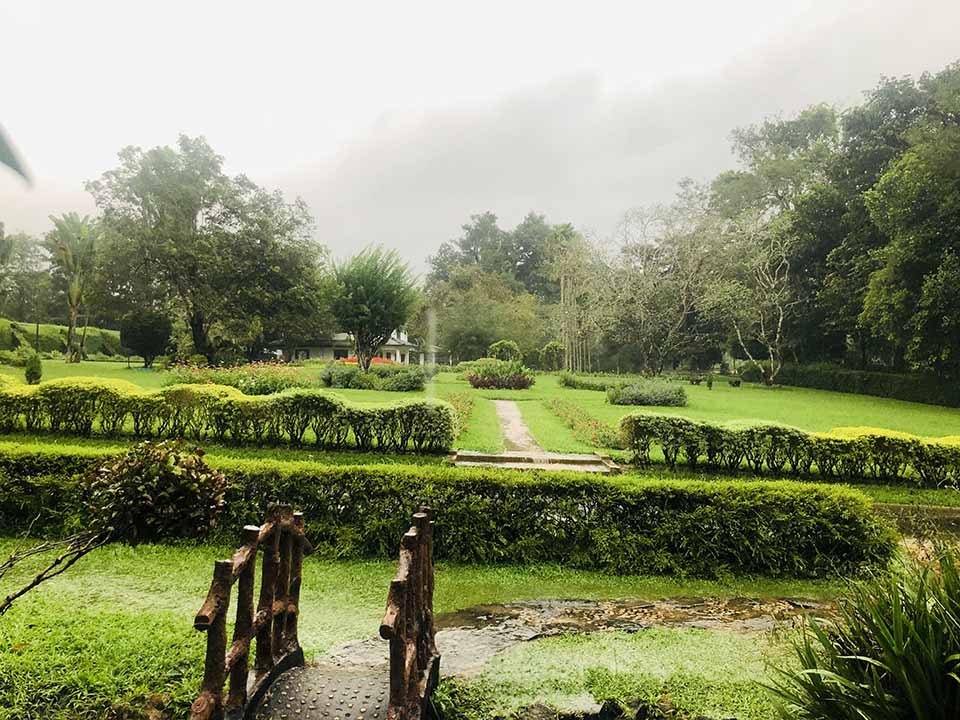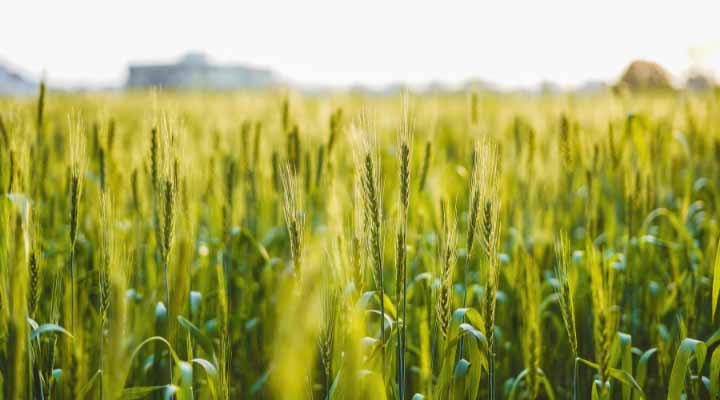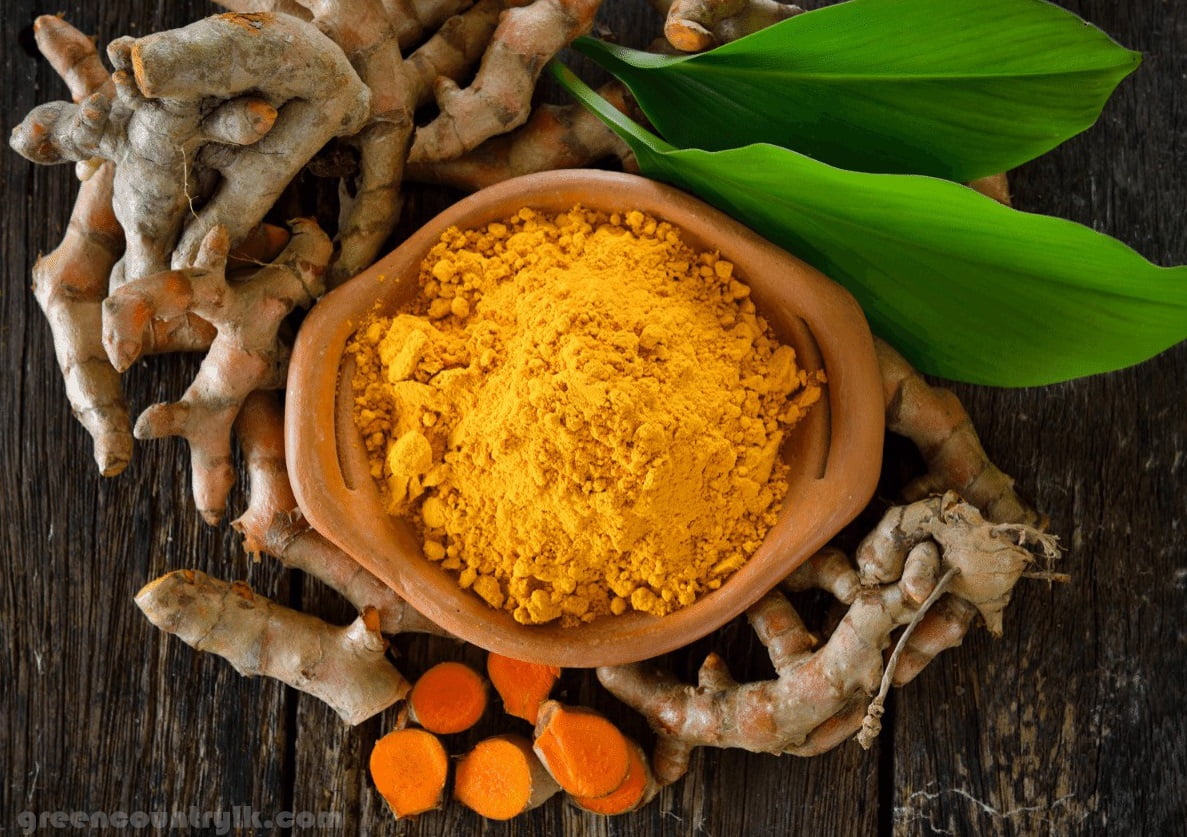Sri Lanka is known for its top export crops, including tea, rubber, and coconut. These industries play a vital role in the country’s economy and global trade. Discover how these crops shape Sri Lanka’s agricultural success.
Sri Lanka is an island nation in South Asia with a rich history of agriculture dating back thousands of years. The country’s favorable climate, fertile soil, and strategic location have made it a major player in the agricultural market. Certain crops grown in Sri Lanka have been a major contributor to the Sri Lankan economy and international trade for centuries. In this article, we will examine the major export crops grown in Sri Lanka, their historical significance, and their role in the modern economy.
First Place:
Tea (The crown jewel of Sri Lanka)
First Place:
First Place:
Tea (The crown jewel of Sri Lanka)
Tea is the most important export crop of Sri Lanka. Due to the high quality of Sri Lankan tea exported, Sri Lanka has gained a very high reputation globally. Sri Lankan tea, which has been the backbone of the country’s economy for more than a century, is often referred to as “Ceylon tea”.
The tea industry in Sri Lanka began in the 1960 when a coffee disease destroyed the island’s coffee plantations. Tea cultivation was introduced to Sri Lanka by a British planter, James Taylor, and it quickly gained international recognition for its quality. Due to the tea plantations in Sri Lanka that were started in this way, Sri Lanka is today one of the largest tea exporters in the world.
Sri Lanka produces various teas, including black tea, green tea, and white tea. The three types of tea mentioned above are the most widely exported by Sri Lanka. The central highlands of the country, with their cool temperatures and misty climate, are the main home of tea cultivation. The main tea growing regions in Sri Lanka are Nuwara Eliya, Kandy, and Uva.
The Sri Lankan tea industry faces challenges such as climate change, labor shortages, and fluctuating global demand. However, Sri Lanka has the opportunity to diversify into organic and specialty teas, which command very high prices in international markets.
Second Place:
Rubber (A versatile commodity)
Second Place:
Rubber (A versatile commodity)
Rubber is another major export crop of Sri Lanka, with a long history dating back to the British colonial era. Rubber cultivation was introduced to Sri Lanka in the late 19th century to meet the increasing demand for rubber during the Industrial Revolution. The first rubber plant cultivated in Sri Lanka can be seen at the Henarathgoda Botanical Garden in the heart of Gampaha city in the Gampaha district of Sri Lanka. Sri Lanka’s tropical climate and well-drained soil provide great conditions for successful rubber cultivation.
Today, Sri Lanka is known worldwide for its high-quality natural rubber production. The region of Sri Lanka is the main producer of rubber, with districts such as Kegalle, Kalutara and, Ratnapura occupying a prominent position. In addition to raw rubber exported by Sri Lanka, value-added products such as rubber gloves, tires, and industrial goods also occupy key positions.
Sri Lanka has earned over a billion dollars annually through rubber exports recently, with Sri Lankan rubber being purchased largely by leading countries such as the United States, Germany and Japan.
To remain highly competitive with larger countries, the Sri Lankan rubber industry is focusing heavily on sustainable practices, including environmentally friendly tapping methods and reforestation efforts.
Third Place:
Coconut (The tree of life)
Third Place:
Coconut (The tree of life)
The “coconut” tree holds a special place in the culture and economy of Sri Lanka. It is often referred to as the “tree of life”.
Coconut cultivation can be seen especially in the coastal area of Sri Lanka. Furthermore, due to the production of various coconut-related products including desiccated coconut, coconut oil, coconut milk and coconut coir (fiber obtained from the coconut husk) in the country, Sri Lanka has managed to attract many people from all over the world.
Coconut and its by-products contribute significantly to Sri Lanka’s export earnings, with Sri Lanka’s coconut product exports exceeding $600 million in 2022. The United States, Europe, and the Middle East are among the major markets for coconut imports from Sri Lanka.
Sri Lanka is also currently investing in value-added coconut products such as “virgin coconut oil” and “coconut water”, which are gaining popularity in health-conscious markets around the world.
Fourth Place:
Spices (Aromatic Treasures)
Fourth Place:
Spices (Aromatic Treasures)
Sri Lanka, nicknamed the “Island of Spices”, has been a major hub for the spice trade for centuries. The country is well-known for its high-quality cinnamon, pepper, cardamom, and cloves.
Cinnamon
Sri Lanka is the world’s largest producer of true cinnamon (Cinnamomum verum). Unlike cinnamon from other countries, Sri Lankan cinnamon is in high demand in many countries of the world for its unique flavor and aroma. Sri Lankan cinnamon exports generate significant foreign exchange, and the United States, Mexico, and Europe are the major importers of cinnamon from Sri Lanka. Cinnamon in Sri Lanka is mainly grown in the southern coastal areas of the country, with Galle, Matara, and Hambantota districts being the main ones. This is because those areas have the tropical climate and soil conditions that are essential for cinnamon cultivation.
Pepper and other spices
Cloves, cardamom and black pepper, grown in the island’s humid and temperate zones, are also significant exports from Sri Lanka.
As of 2022, spice exports contributed over $400 million to the country’s economy, and efforts to promote organic and fair trade certifications to improve competitiveness in the global market are not enough.
Fifth Place:
Betel and Betel Leaves
Fifth Place:
Betel and Betel Leaves
Betel and betel leaves are the most traditional crops grown in Sri Lanka. These crops, which play an important role in the country’s export portfolio, are closely linked to Sri Lankan culture. The product made from betel and betel, called “Bulath Vita”, is a popular chewing product in South Asia.
Betel and betel are purchased in significant quantities from Sri Lanka by India, Pakistan, and countries in the Middle East, and these exports generate a significant level of income for smallholders.
Sixth Place:
Emerging Export Crops
Sixth Place:
Emerging Export Crops
In addition to the traditional crops exported from Sri Lanka, Sri Lanka is currently diversifying into non-traditional exports such as tropical fruits, floriculture and medicinal plants. Fruits such as pineapple, mango, and papaya exported from Sri Lanka are also gaining traction in international markets. Sri Lanka also exports ornamental plants and flowers to Europe and Asia, which is growing significantly due to the increasing global demand for them. In addition, Sri Lanka, which has a rich biodiversity, is now showing great interest in exporting many of the medicinal plants used in Ayurveda.
Sri Lanka’s major export crops, tea, rubber, coconut, pulses and emerging agricultural products, which are essential to the country’s economy and culture, play a major role in the country’s economy. These crops, which have been the sustainable livelihoods of Sri Lankan’s for generations, have earned Sri Lanka a leading position in the global agricultural market. Despite challenges such as climate change and market volatility, Sri Lanka has also been engaged in innovation for sustainable value-added products. Sri Lanka has been able to maintain a leading position in the global market by utilizing the country’s existing agricultural strengths.

